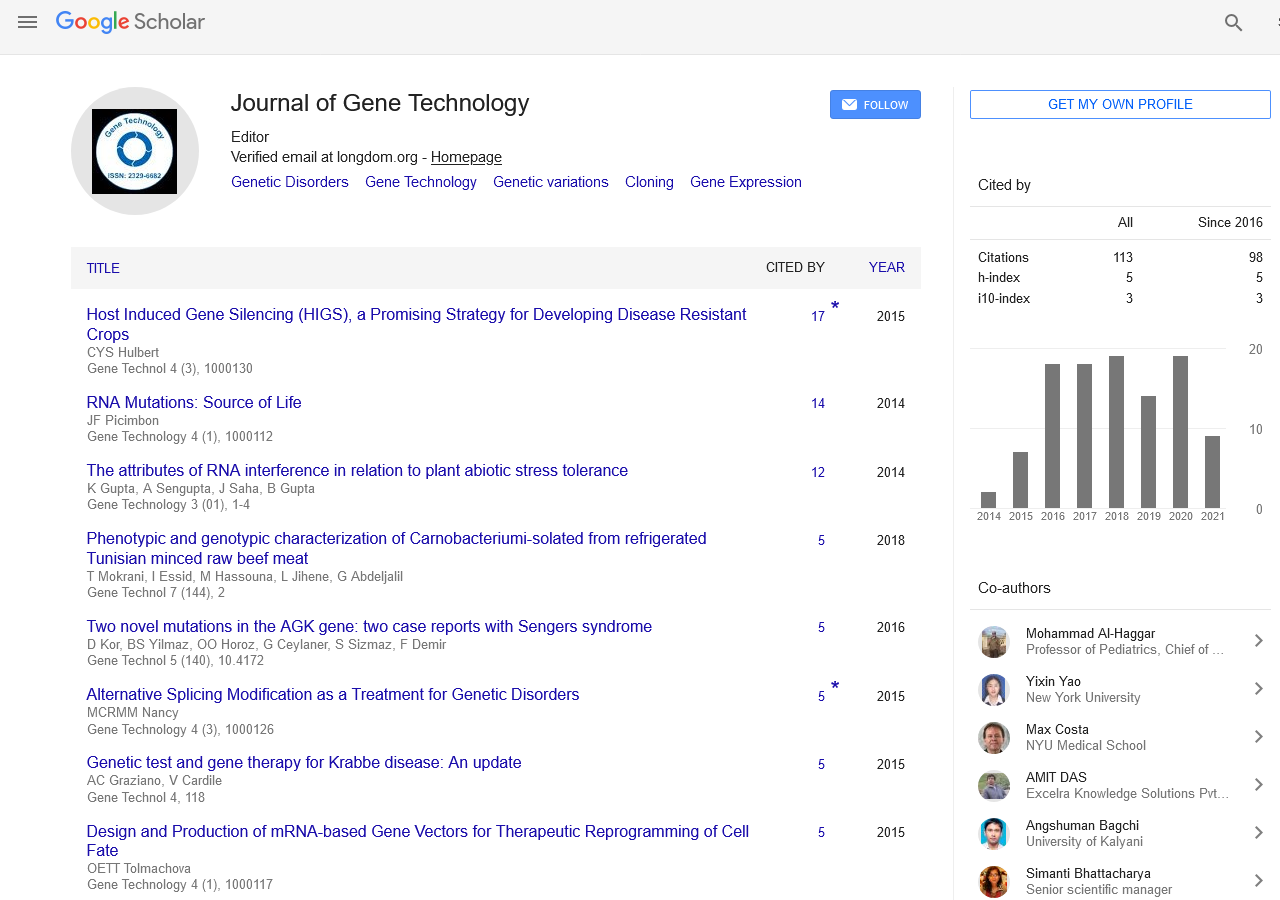PMC/PubMed Indexed Articles
Indexed In
- Academic Keys
- ResearchBible
- CiteFactor
- Access to Global Online Research in Agriculture (AGORA)
- RefSeek
- Hamdard University
- EBSCO A-Z
- OCLC- WorldCat
- Publons
- Euro Pub
- Google Scholar
Useful Links
Share This Page
Journal Flyer

Open Access Journals
- Agri and Aquaculture
- Biochemistry
- Bioinformatics & Systems Biology
- Business & Management
- Chemistry
- Clinical Sciences
- Engineering
- Food & Nutrition
- General Science
- Genetics & Molecular Biology
- Immunology & Microbiology
- Medical Sciences
- Neuroscience & Psychology
- Nursing & Health Care
- Pharmaceutical Sciences
Abstract
Endogenous Factors Causative of Spontaneous DNA Damage that Leads to Random Integration in Human Cells
Haruna Kamekawa, Aya Kurosawa, Masumi Umehara, Eriko Toyoda and Noritaka Adachi
Random integration is a phenomenon in which transfected DNA molecules integrate into (random sites of) the host genome via non-homologous recombination. Although it is assumed that repair of DNA double-strand breaks leads to random integration events, how these endogenous DNA lesions are generated in living cells is poorly understood. In this study, we present evidence that DNA topoisomerase IIa (Top2α) and reactive oxygen species (ROS) are responsible for causing genomic DNA damage that leads to random integration. Specifically, we employed a human pre-B lymphocyte cell line to examine the effects of cellular Top2 expression levels and oxygen concentrations during cell culture. We find that treating cells with Top2α siRNA significantly reduces random integration frequency, while the absence of Top2β had little or no impact. We also show that cells continuously cultured under low (3%) oxygen culture conditions after electroporation display reduced random integration frequency compared to that under normal (21%) oxygen conditions. These findings support the notion that Top2α protein and ROS are endogenous factors that can produce DNA damage leading to random integration of transfected DNA in human cells.


